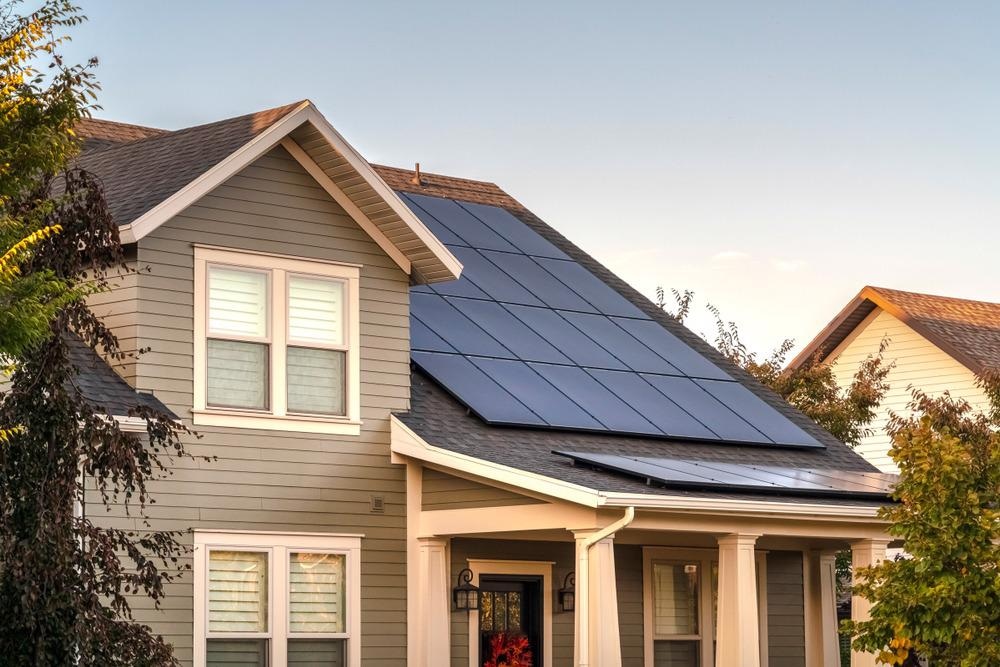
Image Credit: Jason Finn/Shutterstock.com
Buildings of the future could have much improved environmental credentials thanks to next-generation windowpanes that redirect light to solar panels positioned along their outer edges. Such ‘smart glass’ windows would utilize light from the sun and artificial light from within the building to generate electricity.
Innovative Energy Collection
Luminescent solar concentrators (LSCs) are devices that concentrate solar radiation to produce electricity. They have been suggested as an innovative and colorful solution to future energy collection by Rice University engineers, who have designed and built a polymer core-based luminescent window that generates energy using sunlight or light from LEDs.
The windowpanes – prototypes of which appear to come in a range of colors - consist of a conjugated polymer sandwiched between two clear acrylic panels. They redirect light from any source to solar cells situated along their edges.
Conjugated polymers are chemical compounds that can be tuned with precise physical or chemical properties for a number of different applications, including conductive films or sensors for biomedical devices. Although widely used, they had not been considered for LSCs until now as they are prone to degrading quickly and can be unstable.
“But we’ve learned a lot about improving the stability of conjugated polymers in recent years, and in the future, we can engineer the polymers for both stability and desired optical properties,” explains Rafael Verduzco, a professor of chemical and biomolecular engineering, and of materials science and nanoengineering at Rice.
Guiding Waves
The researchers focused on PNV, or poly[naphthalene-alt-vinylene], a polymer that absorbs and emits red light, and has been engineered to function like a waveguide. It can absorb light in a specific wavelength from any direction, but the trick is that it restricts how it leaves by redirecting light to the edges of the panel lined with solar cells. The light can then be converted into electricity.
Researchers believe that adjusting the molecular ingredients would allow the polymer to absorb light in several colors. It could also be tuned to convert energy from infrared and ultraviolet light, allowing the panel to remain transparent.
Energy from Inside and Out
The colorful prototypes generate much less electricity than is collected by the average commercial solar cell, which normally convert around 20% of the sun’s light into electricity. However, LSC windows are always functioning and they can convert light from within buildings into electricity after the sun has gone down.
“Even indoors, if you hold up a panel, you can see very strong photoluminescence on the edge,” said Yilin Li, a postdoctoral researcher at Rice’s Brown School of Engineering who led the study with Verduzco.
Tests show that the panels were more efficient at converting ambient light from LEDs than from direct sunlight – a 3.6% power conversion efficiency compared to 2.9% for direct sunlight, even though the sun was 100 times stronger.
A Colorful Solution
LSCs are considered promising for building-integrated photovoltaic technology. “The motivation for this research is to solve energy issues for buildings through integrated photovoltaics,” said Li.
“Right now, solar rooftops are the mainstream solution, but you need to orient them toward the sun to maximize their efficiency, and their appearance isn’t very pleasing,” Li said, adding that the polymers could be printed in patterns in the panels and turned into artwork. “We thought, why can’t we make colorful, transparent or translucent solar collectors and apply them to the outside of buildings?”
This study, published in Polymer International, also included researchers from the Universities of Washington, Houston, and Cincinnati.
References and Further Reading
Li, Y. et al. (2021) High‐performance hybrid luminescent‐scattering solar concentrators based on a luminescent conjugated polymer, Polymer International https://doi.org/10.1002/pi.6189
SpecialChem (2021) Polymer Core-based LSC Windows to Redirect Light to Solar Cells. Omnexus [Online] Available at: https://omnexus.specialchem.com/news/industry-news/polymer-core-lsc-windows-000224015 (Accessed 15 March 2021).
Williams, M. (2021) Luminescent windows generate energy from inside and out. Rice University [Online] Available at: https://news.rice.edu/2021/02/15/luminescent-windows-generate-energy-from-inside-and-out-2/ (Accessed 15 March 2021).
Disclaimer: The views expressed here are those of the author expressed in their private capacity and do not necessarily represent the views of AZoM.com Limited T/A AZoNetwork the owner and operator of this website. This disclaimer forms part of the Terms and conditions of use of this website.